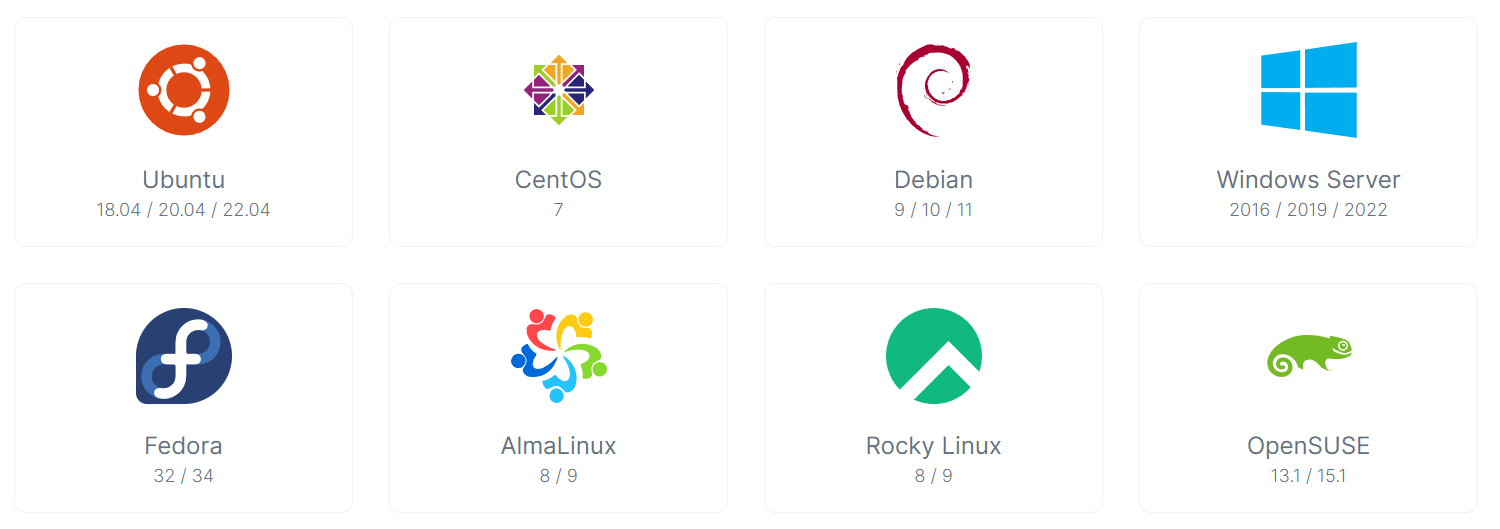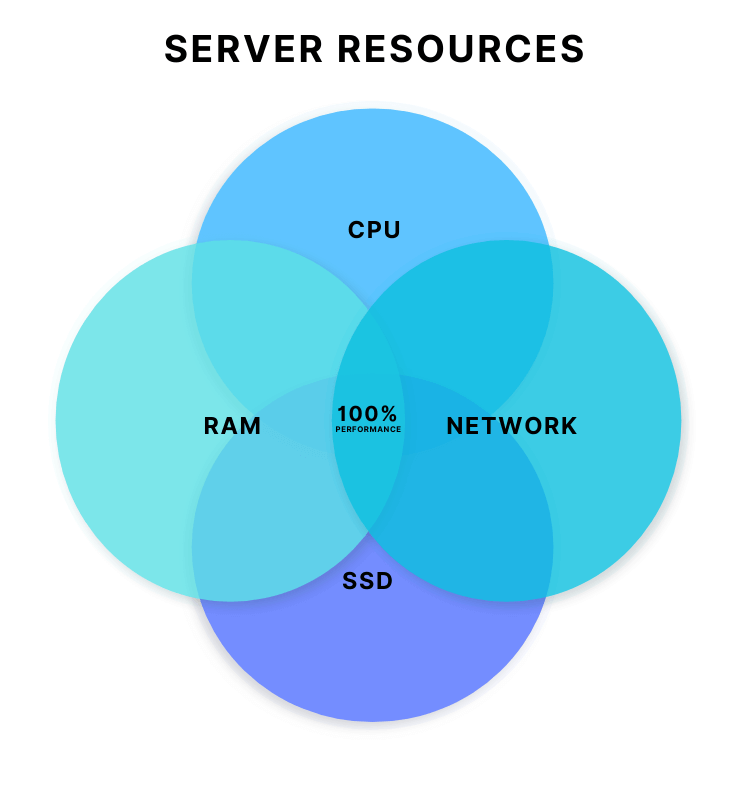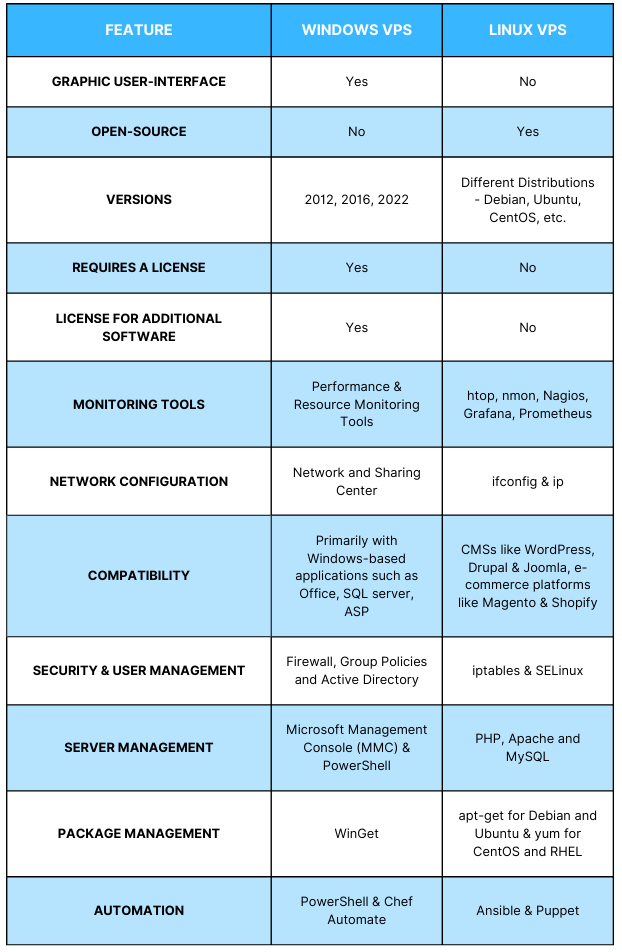With the constant evolution of technology, hosting has established itself as an irreplaceable part of our society. Whether it’s a website or an online application, everything requires hosting in order to reach people around the globe.
However, over the last few decades, different types of hosting have emerged with the 3 most common types being shared hosting, virtual private servers and dedicated instances. Out of these 3, VPS servers have picked up the most hype over the recent years, beginning to convert more and more people. With that popularity come a lot more questions and unknowns such as why there are a few separate types of VPS hosting and what they differ in.
In this article, we are going to be looking into the 2 most popular types of virtual private server hosting - Windows VPS and Linux VPS servers and we are going to look into the similarities and differences between them in more detail.
Operating System
Let’s start by having a closer look at both Windows and Linux VPS servers. The biggest difference between the 2 is the fact that they run on separate operating systems (OS), hence their names. Each OS has its own set of advantages and drawbacks, which is also the reason for the divergent attributes that both types of VPS servers can exhibit.
Windows VPS servers utilize the Windows Server operating system. Developed by Microsoft, Windows Server is an OS that focuses on providing a user-friendly graphic interface while also aiming to offer compatibility with a wide range of Microsoft products such as Office, Microsoft SQL Server and ASP.NET, which can all be used in order to simplify workflow and server management.
Linux VPS servers, on the other hand, run on Linux - an open-source operating system that can come in many different distributions with some of the most popular ones being Ubuntu, CentOS and Debian.

Due to the fact that Linux is entirely open-source, it has a large community following, which adds some substantial benefits that we are going to discuss in more detail throughout this article. In general, however, Linux has always been the more popular operating system when it comes to servers although more difficult to operate.
This can be partly attributed to the fact that Linux cloud servers make great hosting platforms for all types of websites and applications including CMS-powered creations, custom projects and e-commerce platforms.
Competition aside, both operating systems have stood the test of time when it comes to longevity and viability. Microsoft releases a new Windows Server version every so often with the latest ones being 2022 and 2025 and different Linux distributions are being updated every couple of years in order to integrate new features and accommodate requirements.
Additionally, both OS types aim to provide support for older versions for as long as possible, giving everyone enough time to adapt to the new changes and migrate as seamlessly as possible.
In terms of support, Windows Server relies solely on Microsoft’s support team, whereas Linux has a vast following and a substantial community consisting of both regular users and developers, who are capable of answering questions and providing explanations through their own experience, documentation and projects.
Ease of Use
Now that we’ve covered the basics about the operating systems, it’s time to discuss the differences between the 2 types of servers with our first comparison being between the ease of use of both systems.
As we already mentioned, Windows VPS servers run on Windows Server, which has a built-in graphical user interface (GUI), making it easier for newcomers and those without prior technical experience to start managing their server. Another benefit of this hosting type is the fact that most people are already familiar with Windows as an operating system and are much quicker to adapt to the different options and management features that are available to them. This intuitive interface makes them a fantastic option for beginners.
When it comes to Linux VPS servers, it can be quite challenging to manage if you are just starting out. Firstly, you need to be aware of the different distributions that exist as well as their versions and the features that each one can offer. This is because different projects can perform better depending on your environment and operating system, meaning that you are going to need to do some research before you can even start managing your server.
In terms of interface, Linux servers don’t have a built-in one which you can readily use and instead utilizes the command-line interface (CLI) to execute commands and run the server.
However, the lack of a GUI isn’t a substantial problem as there are many tools that you can find online available for download that you can install onto your server to bring that graphical, intuitive environment to your Linux VPS. This can help you simplify some of the more tedious tasks when you are just starting out.
Overall, Linux server management can be more difficult to new users in contrast to Windows servers, however, it is important to mention that the learning curve might vary depending on prior technical experience as some Windows tools and its syntax can prove to be more difficult to understand and manage.
Cost & Licensing
The next aspect we are going to focus on is the price, as it is quite an influential part when it comes to choosing between a Linux or a Windows VPS.
While Windows Server can be better for beginners, it does come with a license that you need to buy separately. Most providers do include it in the overall server price, which is why you might notice a substantial difference in lower-priced Windows and Linux VPS servers which at a first glance have the same server resources.
Not only that, but all other additional software such as RDP access and Office, for example, that you might wish to install onto your server, also comes with a license that you need to pay extra for.
Servers running on Linux don’t require any additional payments as most of the software is already community-developed, meaning that it’s fully open-source and entirely free to use. This is also why it is much more strenuous to migrate from a Linux VPS to a Windows VPS as you are going to need to take into account all of the additional fees and licenses.
Performance & Monitoring
The next aspect that we are going to cover is performance and monitoring when it comes to both types of servers. In general, the performance is vastly affected by the available server resources in the face of the CPU cores, RAM and storage space as well as the available network bandwidth rather than being substantially influenced by the operating system.
However, Windows VPS servers do tend to produce a tiny amount of overhead due to the large and complex structure of the OS, which might result in a slightly lower performance, which will in most cases be unnoticeable.
This is a small price to pay when it comes to all of the other advantages such as its GUI. Although, this does explain why e-commerce platforms and large projects with more intense traffic are more commonly hosted on Linux VPS servers due to the constant stream of continuous performance.
Additionally, both types of servers support performance optimizations, allowing you to fine tune your server. For Windows VPS for example, you can tweak registries and services in order to boost your server speed. In terms of Linux, there are tools like kernel tuning and performance profiling which allow for maximum resource optimization and exceptional performance.
Resource Monitoring
Another thing that we want to discuss is the monitoring tools that come with both types of servers. In general, Windows VPS offers built-in tools like the Performance and the Resource Monitor which can be helpful when it comes to determining system resource consumption. However, they can be quite difficult to understand for beginners due to the vast majority of information and data that they contain, which can affect their comprehension in addition to the fact that not all data is updated asynchronously.
Linux tools on the other hand, employs tools like htop and nmon that can track CPU, disk, RAM and network usage in real-time with much more in-depth information. Examples of some extra monitoring tools include Nagios, Grafana and Prometheus, which can be used to identify any performance issues.

Network Configuration Tools
Even though server resources are important, you should also not neglect the network and its settings. Windows VPS servers utilize the familiar Network and Sharing Center, which while user-friendly, doesn’t provide that much in-depth configuration options.
Linux VPS servers in comparison, have tools like ifconfig and ip that can easily help you manage the cloud server at a much more granular level, enabling you to configure IP addresses and firewall rules. Additionally, Linux servers also tend to show lower latency in comparison to Windows VPS servers due to the overhead that the operating system might come equipped with.
Moreover, both Linux & Windows servers can handle a lot of traffic and concurrent requests, however, Linux can accommodate and resolve bottlenecks better.
Software Compatibility
When it comes to compatibility, Windows VPS servers tend to lag behind Linux for the sole reason that Windows Server as an operating system is designed to work primarily with Windows-based applications such as Office, SQL server and ASP.
Due to the open-source nature of Linux, though, the operating system remains quite flexible when it comes to software. It is compatible and supports a plethora of open-source applications that can run on the different distributions with one of its greatest advantages being that the operating system is capable of running content management systems like WordPress, Drupal and Joomla as well as e-commerce platforms like Magento and Shopify.

Documentation support for Windows Server is expansive in terms of the Microsoft software that the operating system supports, having detailed installation guides, troubleshooting tutorials and regular updates.
Linux, in contrast, is fueled by the support of the community who also provide useful insights and guides. However, it is important to mention that the divergent distros have different levels of support as some become outdated with time and with newer versions coming out. For example, big distributions like Ubuntu and Debian have a much larger community in comparison to Alma or Rocky.
Security Features & Data Recovery
Another important thing that both types of cloud servers differ is the level of built-in security. Due to its popularity and familiar nature, Windows servers are often the target for attacks and vulnerability exploits.
This has, consequently, resulted in Microsoft pushing updates and upgrading their security features over the last few years, patching exploits and introducing additional protection layers. While great at a first glance, such updates can create compatibility issues, which require manual configuration in order to be resolved.
Linux servers are generally considered more secure, because the operating system is open-source, meaning that it has much wider community support hence why bugs, issues and vulnerabilities are discovered early and fixed as soon as possible.
Updates are generally carried out through the given distributions’ package manager in order to guarantee that everything stays secure. Linux utilizes iptables and SELinux to configure and set up firewall rules and the security profiles for the cloud server, which can offer much better control over the security settings. Windows VPS servers can take advantage of the Firewall and Group Policies.
In terms of user management, Windows VPS handles permissions through the Active Directory, whereas Linux VPS uses PAM and group-based access control for much flexible control.
When it comes to secure data recovery, Microsoft uses many different recovery options including third-party solutions as well as MS-developed ones, whereas Linux makes use of open-source tools like Rsync, Bacula and ZFS.
Additionally, Windows Server also has even logs and structured error messages, whereas Linux provides core dumps and error messages that offer much more in terms of information, which can be useful for server administrators.
Both offer Great Scalability
Another important thing to mention is that both types of servers can be scaled up and down to accommodate the resource needs of the user. The same applies to load balancing with Windows requiring slightly more manual configuration than Linux, which supports automatic scaling with tools like Apache and Nginx.
Server Management Tools
In terms of server management, Windows VPS come equipped with the Microsoft Management Console (MMC) and PowerShell, consisting of a graphical user interface that can help when managing the server. Windows Server also utilizes the Package Manager - WinGet to install and manage software.
Linux, in comparison, uses the command-line interface and third-party tools like PHP, Nginx and MySQL to manage web applications, which can be more difficult for new users to start using. As for the package managers, they are different based on the Linux distribution with apt-get being the one for Debian and Ubuntu and yum being the onde for CentOS and RHEL.
When it comes to their respective file systems, Windows supports NTFS, which can offer features like journaling and encryption, whereas Linux offers multiple file systems like ext4, btrf and ZFS.
Process Automation & DevOps
Lastly, we want to touch upon automation and DevOps. Windows VPS servers employ PowerShell and Chef Automate and Linux makes use of Ansible and Puppet, all of which can help automate tasks and manage infrastructure as well as help implement CI/CD with the help of tools like Jenkins and TeamCity for Windows and GitLab, Spinnaker for Linux.
In terms of scripting, Windows utilizes PowerShell and Linux uses Bash. As for the developer assistance, Windows offers tools like Visual Studio and .NET and Linux supports a wide range of programming languages with a variety of tools that can build many applications.

Windows or Linux VPS - what should you choose?
Overall, both types of servers come with their own advantages and setbacks. Windows VPS servers are more suitable for beginners due to their familiar and intuitive user interface. However, do keep in mind that Windows Server requires a license and so do the other Microsoft products.
Linux VPS servers can be more difficult to manage for beginners due to the fact that they don’t come equipped with a GUI. But due to their open-source nature, there is more community support, available software and tools to manage your server.
However, both are a perfect option and will meet your hosting needs as they offer exceptional security, resource and monitoring tools and automation options.







